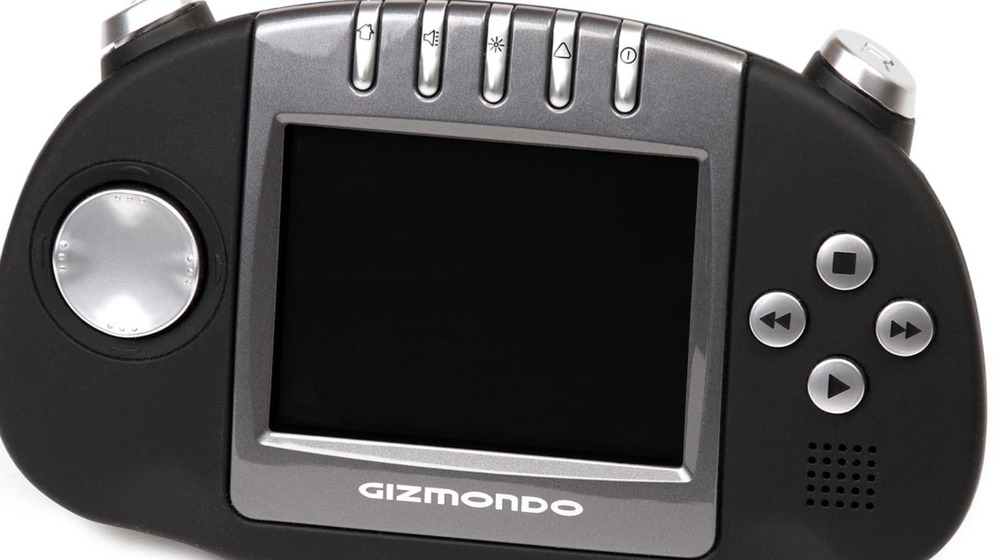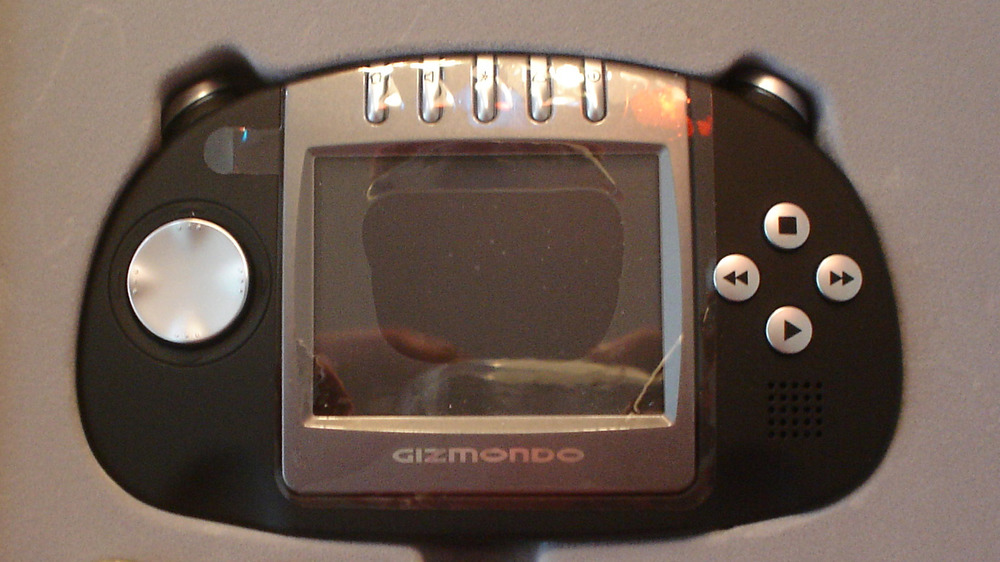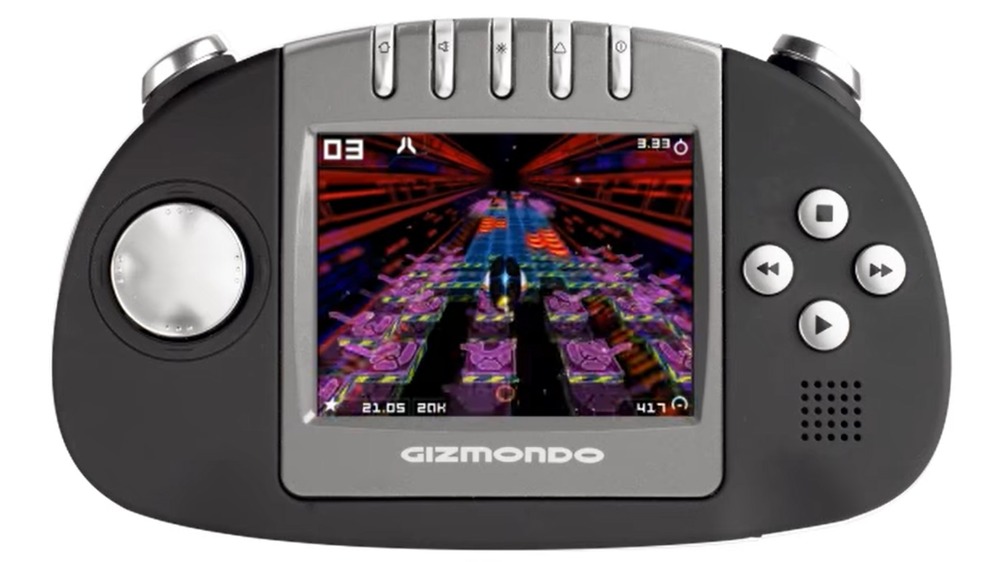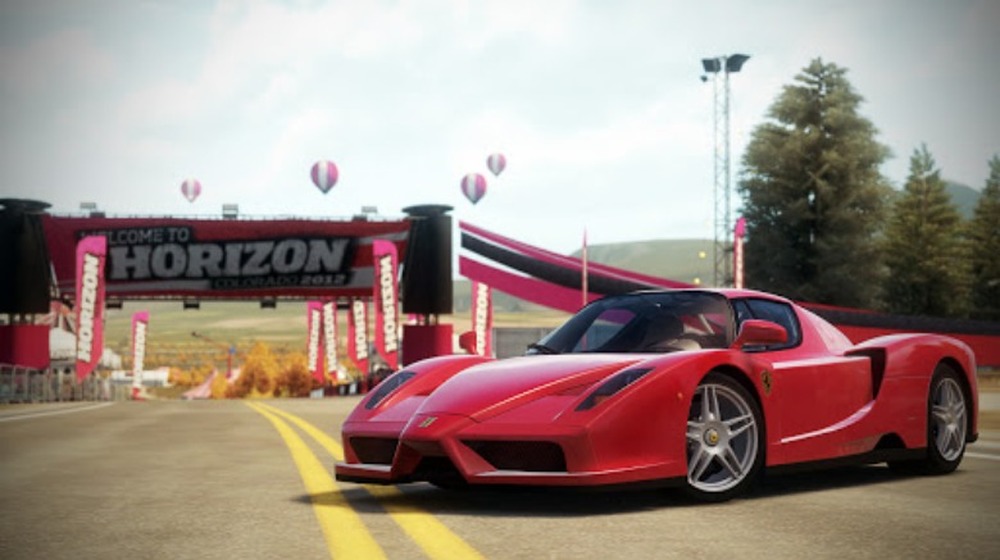The Untold Truth Of Gizmondo, One Of The Biggest Console Failures Ever
Launching a new console is a risky proposition. To carve out a piece of the video game market, a company needs to have the resources to develop the technology, put together a stable of games, and fund a marketing campaign, all long before investors can reasonably expect any sort of return.
The sheer difficulty of coordinating a successful launch means that not even the biggest names in the game can stick the landing every time. Major console releases like the PlayStation 3 have been labeled as flops, although their massive, dedicated fanbases often make up for this. Handheld systems put out by major manufacturers also usually have a tough time, as even seemingly sure things have problems, such as the Wii U, which floundered for months before being outperformed by the celebrated Nintendo Switch.
However, one company tried to defy the odds with a global marketing campaign that caught the world's attention before the entire thing ended in a cataclysmic car crash and jail time for key executives. This is the untold truth of Gizmondo, one of the biggest console failures of all time.
Gizmondo started as a child tracking device
The Gizmondo was a device from Tiger Telematics that initially tried to combine kids' two favorite things – videogames and having their whereabouts tracked by their parents.
In 2002, a Swedish entrepreneur named Carl Freer had been shocked, as had most of the European public, by the terrible Soham murders. Freer, a parent himself, began wondering what the best way to integrate GPS technology into a child tracker would be. A significant obstacle, his team realized, would be getting kids to carry the tracker around with them. Freer recalls, "So we thought, how about we make it more fun? What if we put in a gaming interface?"
That idea began to snowball into something that sounds familiar now but was still innovative in the early 2000s. The unit would integrate online capabilities, wireless SMS, and PDA functions, have an online store for games, and be sold in sleek Gizmondo brick-and-mortar locations staffed with trendy employees. Launching a brand-new console with no industry recognition is hard, but Freer and Tiger Telematics somehow pulled it off. The Gizmondo arrived in 2005 with a lavish launch party featuring performances by Busta Rhymes, Pharell, and Sting.
Gizmondo had deep ties to violent members of the Swedish mafia
When the Gizmondo launched in 2005, the critical community met it with a collective shrug. On the one hand, the Gizmondo had some groundbreaking features, such as its ability to operate as an all-in-one camera/SMS/gaming device two years before the iPhone's launch. On the other hand, the device had none of the infrastructure that a handheld console needed to succeed. It launched with one game, Trailblazer. People started asking questions about how Tiger Telematics was raising money and who was making these odd games. In Oct. 2005, a Swedish newspaper called Aftonbladet found out.
Deeply embedded in the Tiger Telematics corporate hierarchy was Stefan Eriksson, the convicted leader of the Swedish Uppsala mafia, along with his former criminal lieutenants. Eriksson had been jailed for six years for a series of violent crimes that culminated in an attempt to defraud 22 million kroner from a Swedish bank.
Furthermore, Tiger Telematics was paying millions of dollars to a development studio, Northern Lights, to produce Gizmondo games. However, it was soon revealed that Northern Lights' owners were none other than Carl Freer and Stefan Eriksson.
Gizmondo's saga ends with the destruction of one of the rarest cars in the world
Carl Freer and Stefan Eriksson resigned following the Aftonbladet article detailing their history. However, the company wasn't done yet. Tiger Telematics was already promoting a widescreen version of the Gizmondo, and there were rumors regarding talks with Microsoft to produce an Xbox-branded version. However, all of that ended on a stretch of the Pacific Coast Highway with the destruction of a rare Ferrari Enzo.
Eriksson was found in Feb. 2006 by the California Highway Patrol standing next to a Ferrari Enzo that had been sheared in half after hitting a power pole at 190 mph. Further investigation revealed that the car had been leased from the Royal Bank of Scotland by Eriksson, but he'd stopped making payments, effectively making the car stolen. Eriksson was charged with grand theft auto and served two years in a California prison before being deported to face more charges in Sweden.
The scandal was the end of the road. European financial investigators found that Tiger Telematics had "sustained net losses aggregating $382.5 million" in 45 months. The Gizmondo was quickly relegated to a sensational footnote in video game history.




